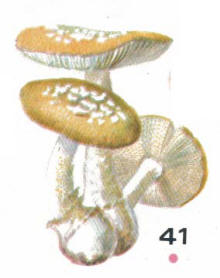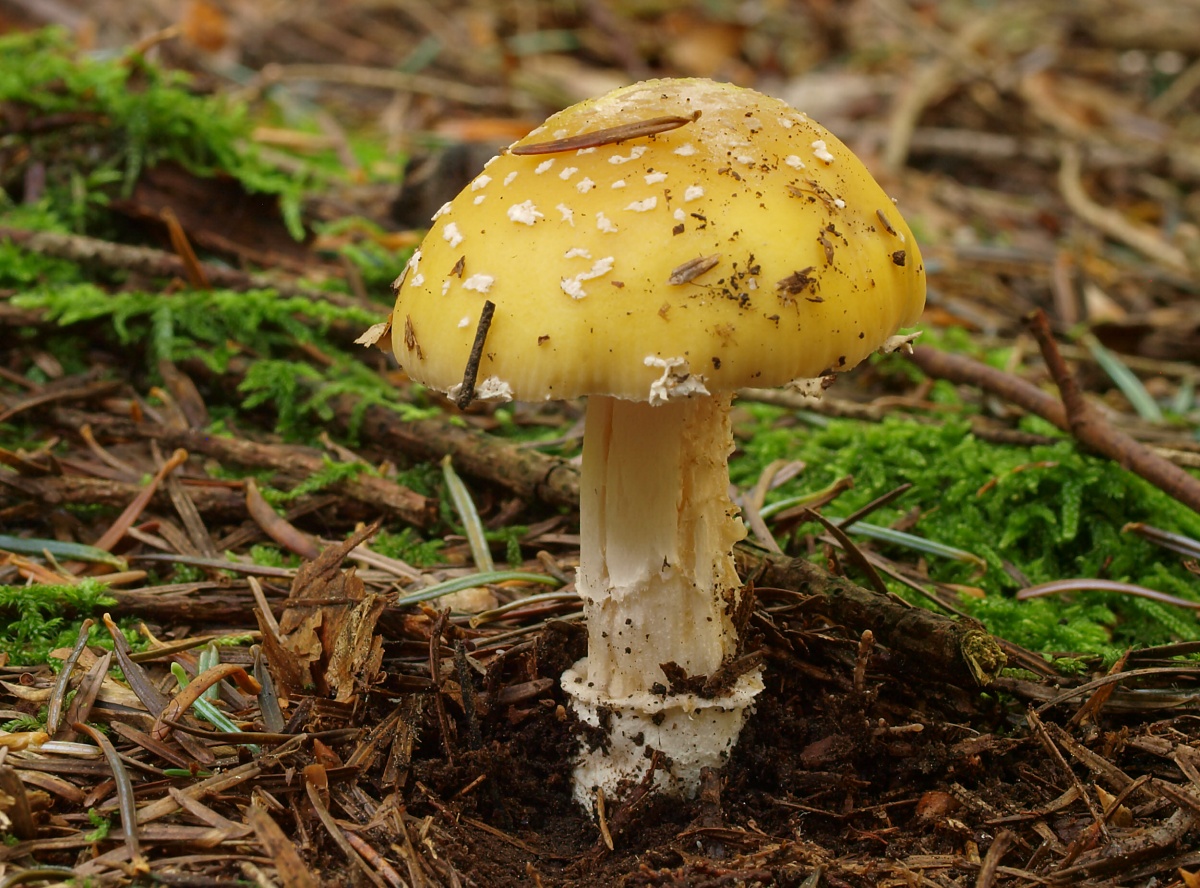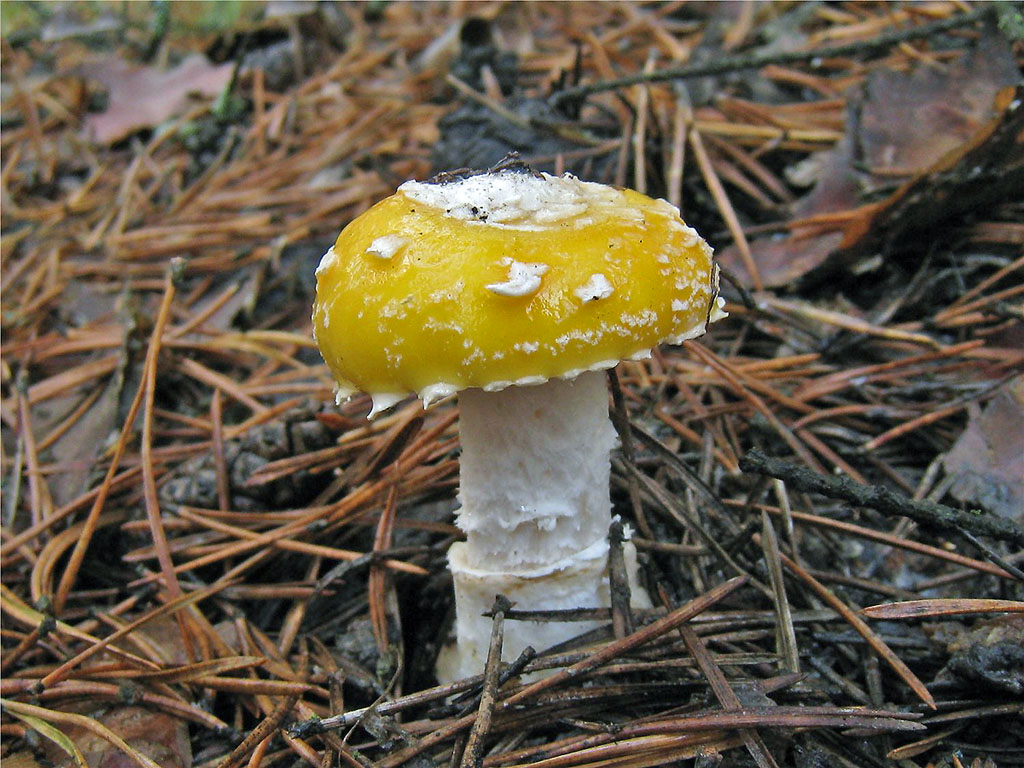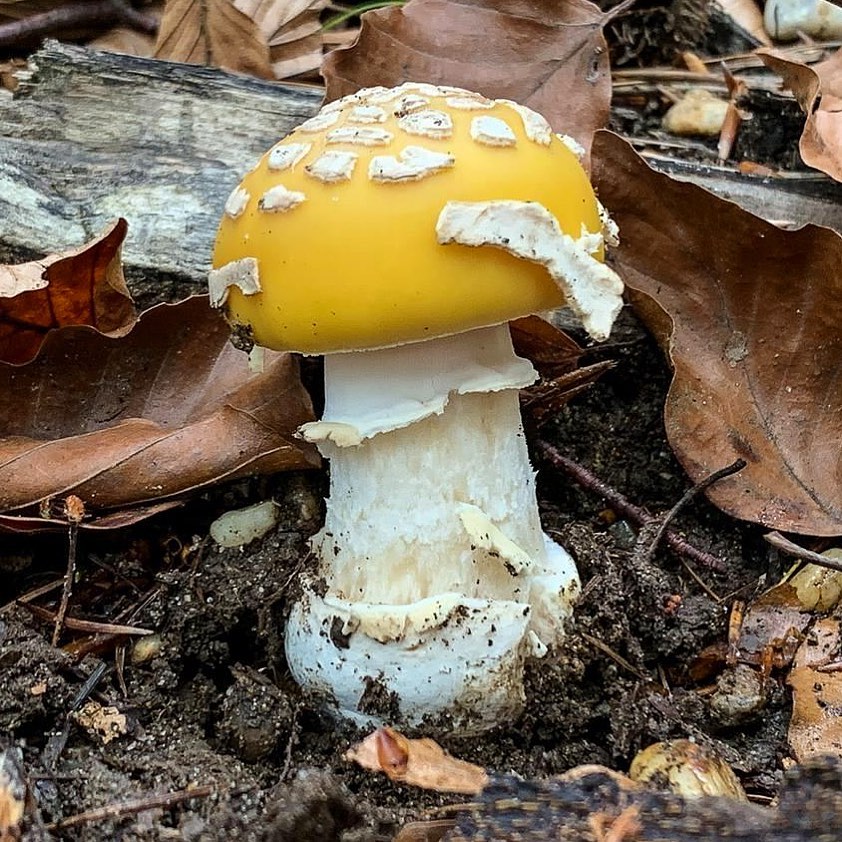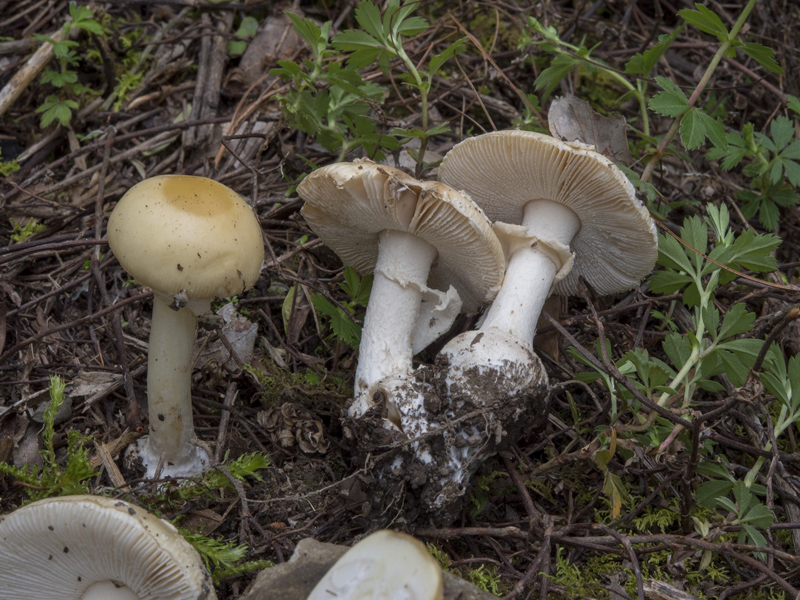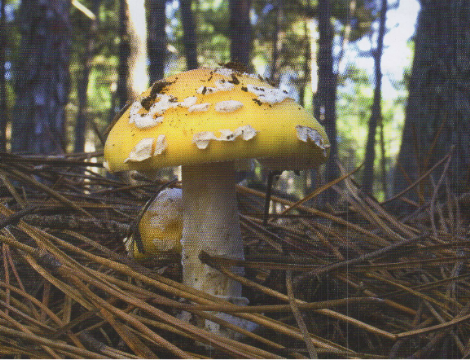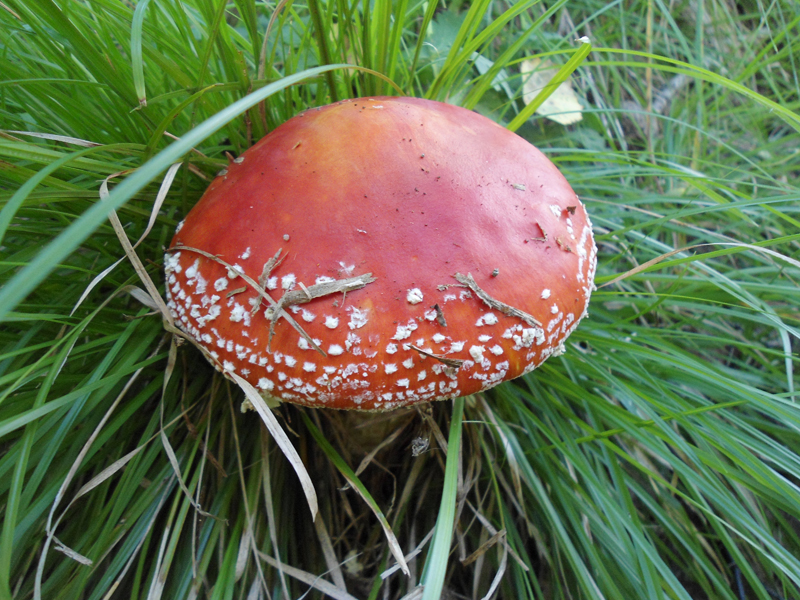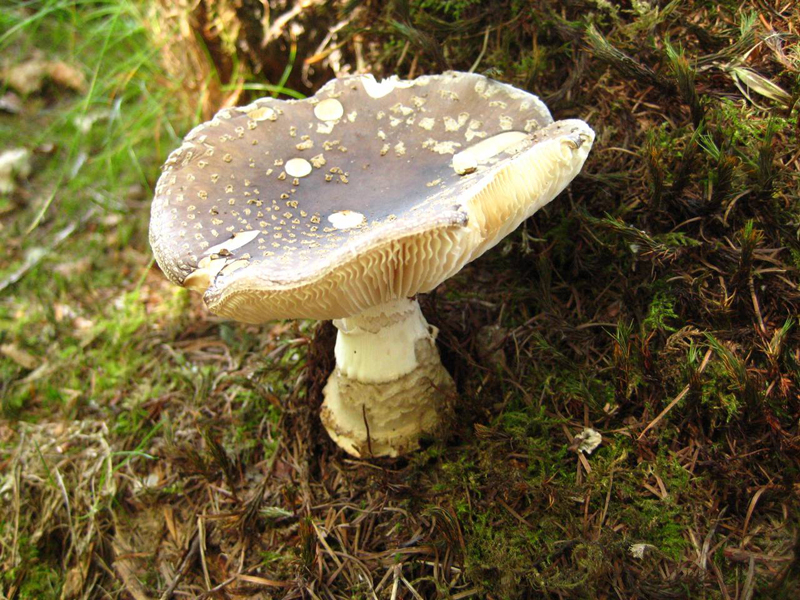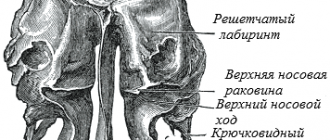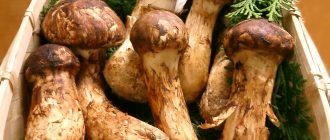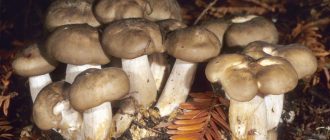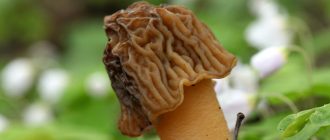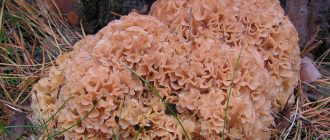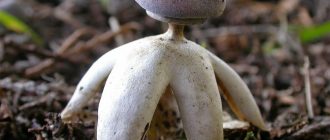Psychotropic properties of red fly agaric
Red fly agarics contain psychoactive substances, due to which they have long been used by various peoples in religious ceremonies. Northern peoples used these mushrooms as a hop remedy. The action of red fly agarics is similar to strong intoxication: hallucinations appear, bouts of joy and anger alternate, objects are bifurcated, sounds begin to be heard, and colored visions appear. After that, loss of consciousness occurs, accompanied by amnesia.
Interestingly, reindeer rush to feast on them when they find red fly agarics. Chukchi most often dried amanita. Then they bit off small pieces of dried mushrooms, chewed them thoroughly and washed them down with water.
Psychoactive and toxic substances dissolve well in hot water, if fly agarics are boiled in several waters, the poisoning will be less severe. But since the content of poison in the fruit bodies may be different, it is dangerous to eat red fly agaric. But despite this, amanitas are eaten in Japan, Nagano Prefecture. Some sources report that when boiling red mushrooms in two waters, they become edible, but this information is not substantiated.
After eating red fly agarics, a person can laugh or cry for 2 hours, be trapped in hallucinations or become unconscious. The poison of these mushrooms acts almost immediately, causing suffocation, seizures, fainting or excitement of the nervous system. These mushrooms began to be used as a drug in our country over 1000 years ago.
The Mari and Mordovians considered these mushrooms to be the food of the gods. And the shamans of the Ob Ugrians used fly agarics to achieve trance. The Chukchi, Kamchadals and Koryaks used these mushrooms to communicate with spirits, predict the future and other ritual ceremonies.
Among the Chukchi, 3 stages of intoxication with fly agarics have been described. First comes pleasant excitement, fun, dexterity appears and physical strength increases. At the second stage, hallucinations arise, people see spirits, they hear voices, objects look disproportionately large, reality seems different, but at the same time people can answer questions and remain conscious. But the third stage is difficult, a person's consciousness changes, communication with others is interrupted, he remains active, communicates with hallucinogenic spirits, and then falls into a heavy narcotic sleep.
The value of red fly agaric for animals

Many animals, such as moose, deer, bears and squirrels, eat these mushrooms. But the significance of fly agarics for animals has not been clarified.
Toxic properties of red fly agaric
The red fly agaric contains muscarine, muscimol and ibotenic acid. Amanita fruit bodies contain toxic substances that have a psychotropic effect.
Ibotenic acid is toxic, it provokes the death of brain cells. For a long time, it was believed that muscarine is an active psychotropic substance, but then it was proved that predominantly muscimol and ibotenic acid have a psychotropic effect. Muscarine dilates blood vessels and reduces cardiac output.
With a large amount in the body, muscarine causes nausea, vomiting, a decrease in blood pressure, increased sweating and salivation. In severe cases, suffocation occurs due to pulmonary edema, convulsions and bronchospasm. And in the most critical situations, loss of consciousness occurs and death occurs.
In case of poisoning with red fly agaric, lethal outcomes are very rare, because if one mushroom accidentally falls into a basket with edibles, then the concentration of the poison is very low. And it is very easy to recognize the fly agaric due to its characteristic colors. A lethal dose is 15 caps of red fly agaric per person.
Using red fly agaric as an insecticide

Minolta dsc
As early as the 13th century, the toxic properties of these fungi in relation to insects were revealed. Infusions from insects were made from red fly agarics, which is why the characteristic name appeared.
Flies do not die from poisoning, but for another reason. In adult fly agarics, the caps become concave, water accumulates in them, the flies drink this water with dissolved alkaloids, as a result of which, after a few minutes, they fall asleep and simply drown. The same situation occurs if there is a saucer with fly agarics in water in the room. But if you get a fly out of the water, then in 10-12 hours it will wake up safely and fly away.
Amanita - application, treatment with fly agaric.
Amanita is collected during the entire growing season. Only hats of a dark color are taken, rounded and even. Cut lengthwise, the mushrooms are dried in the oven at a temperature not exceeding 50 °. If the caps of fly agarics are large, it is advisable to pre-dry them in the open air. Store dried mushrooms in a sealed container in a dark, dry place. Medications made from fly agaric should only be taken under the supervision of a homeopathic physician.
External use always gives a good healing effect. Amanita in the forest is the first remedy for wound healing. To do this, you just need to take a hat, knead it and bandage it to the affected area. In less than 2 hours, the wound will begin to heal.
When using fly agaric, you should always remember that this mushroom is deadly poisonous! All mushrooms collected for storage, as well as preparations from them, must be kept in signed containers on the far shelves. Children and pets must not have access to them. If there are signs of fly agaric poisoning or even suspicion of it, you should urgently seek medical help.
Description of red fly agaric
The size of the cap of the red fly agaric ranges from 8 to 20 centimeters. At first, the shape of the cap of the fly agaric is hemispherical, but with age it opens and becomes flat or concave. The color is bright red, while the color density is different. The skin is shiny with white wart flakes.
The pulp is white, and closer to the skin it is light yellow or light orange, with a slight odor. The width of the plates is 0.8-1.2 centimeters, their color is cream or white. The plates are located freely, and between them there are numerous intermediate plates.
The leg is 8-20 centimeters high, its diameter is 1-2.5 centimeters. The shape of the stem is cylindrical, the tuberous base is thickened, the color is yellowish or white. In adulthood, the leg becomes hollow. There are flakes on the cap - the remains of the bedspread. The flakes may fall off. In the upper part of the leg there is a membranous ring with uneven edges and a brownish surface. Spores are smooth, ellipsoidal, white spore powder.

Variability of the red fly agaric
The hat can have various shades - from bright red to orange-red; in older specimens, the color is much lighter. Young mushrooms often have flakes on their caps, while older mushrooms can wash them off by rain. Sometimes the plates may turn light yellow. In North America, a form characterized by a lighter yellow-orange cap grows.
Areas of growth of red fly agaric
Red fly agarics form mycorrhiza mainly with spruce and birch. They prefer to grow in acidic soils. Often found in temperate forests in the Northern Hemisphere. They can grow in the mountains, meeting up to the upper border of the forest. In our country, red fly agarics grow everywhere. These mushrooms bear fruit from August to October.
Similar species
Outwardly, red fly agarics are similar to the edible Caesar mushroom, which grows mainly in southern Europe, but these mushrooms can be distinguished by their golden-yellow plates and stem.

Caesar mushroom
Also, the red fly agaric looks like its brother, the royal fly agaric, but it has a darker red-brown hat.
Hallucinogenicity of bright yellow fly agaric
These mushrooms are distinguished not only by their variable color, but also by an ambiguous reputation.
There are various opinions about the edibility of bright yellow fly agarics: in some sources they are classified as deadly poisonous mushrooms, in others as inedible, and in others they are described as mushrooms with hallucinogenic properties.
Apparently, this is due to the fact that bright yellow fly agarics exhibit varying degrees of toxicity. It depends on where they grow, for example, in the southwestern part of France, these mushrooms are actively eaten, but in the rest of this country they are treated with caution. In Germany, in general, bright yellow fly agarics are considered deadly poisonous.

If poisoning occurs, then the symptoms are similar, as in the case of poisoning with fly agaric. It is precisely known about one series of poisoning with bright yellow fly agarics, with one case ending in death. The poisoning occurred in the Chilean province of Malleco, located in South America, between 1986 and 1990. After poisoning, the victims had gastrointestinal manifestations and hepatitis.
The same symptoms are inherent in case of poisoning with the toadstool, but amatoxins, which are the main toxic substances of the toadstool, were not found in the bright yellow fly agaric.
The bright yellow amanita contains a small amount of muscarine, but it does not affect the overall picture of intoxication. In addition, the composition contains a large amount of ibotenic acid and muscimol, due to which the classic mycoatropin syndrome occurs.

3 hours after eating poisonous fly agarics, visual hallucinations appear, nausea, vomiting, diarrhea, stomach pains, heartbeat becomes slow and irregular. In severe cases of poisoning, a coma, convulsions develop, and everything ends in death. But deaths are extremely rare.
Description of amanita bright yellow
The diameter of the bright yellow fly agaric cap ranges from 5 to 12 centimeters. At first, its shape is hemispherical, and as it grows, it becomes flat-spread. In a dry state, the surface of the cap is silky-shiny, and in wet weather it becomes sticky. The cap is naked with grayish flakes and small grayish warts. Warts and flakes are easily washed off by rain. The cap is striped along the edge.
The color of the bright yellow fly agaric hat is quite diverse. As a rule, the color is ocher yellow or beige yellow, but it is almost white, golden and orange.
The plates are often spaced, wide, soft, white in color, with age they can become creamy or yellowish. The pulp under the skin is yellowish, but further white. The pulp has a weak mushroom or rare aroma. The taste is inexpressive or slightly sweet.

The leg height is 4-15 centimeters, and the diameter is 0.5-1.5 centimeters. The leg is slender, a slight thickening is noticeable at the bottom. With age, the leg becomes hollow. It is quite fragile in structure. On the leg there is a filmy ring, white or yellowish. Above the ring, the surface of the leg is smooth, and below they are slightly pubescent or scaly. The ring quickly disappears, and a fuzzy mark remains on the leg. The color of the leg is white or yellowish. Volvo is soft, short, poorly visible, it grows at the base of the leg.
Areas of growth of bright yellow fly agaric
These fungi form mycorrhiza with hornbeam, linden, oak, beech and hazel. They grow in forests, including mountain ones. They grow in the southern temperate zone of the European part and Eastern Siberia. Bright yellow fly agarics bear fruit from June to October.

Amanita rubescens
- Other names for the mushroom:
- Amanita gray-pink
- Amanita pink
Other names:
- Amanita pearl
Amanita muscaria forms mycorrhiza with deciduous and coniferous trees, especially with birch and pine. Grows on soils of any type, throughout the temperate zone of the Northern Hemisphere. Amanita muscaria bears fruit singly or in small groups, is common. The season is from spring to late autumn, most often from July to October.
Hat ∅ 6-20 cm, usually no more than 15 cm.Initially semi-spherical or ovoid, then convex, in old mushrooms it is flat-spread, without a noticeable tubercle. The skin is most often grayish-pink or red-brown, to meat-red, shiny, slightly sticky.
The pulp is white, fleshy or thinly fleshy, with a weak taste, without a special smell. When damaged, it gradually turns into light pink, then into a characteristic intense wine-pink color.
The leg is 3-10 × 1.5-3 cm (sometimes up to 20 cm high), cylindrical, at first solid, then becomes hollow. The color is white or pinkish, the surface is lumpy. At the base it has a tuberous thickening, which, even in young mushrooms, is often damaged by insects and its pulp is penetrated with colored passages. The plates are white, very frequent, wide, free. When touched, they turn red, like the flesh of the cap and legs. The remains of the bedspread. The ring is wide, filmy, hanging, at first white, then turns pink. It has clearly visible grooves on the upper surface. Volvo is weakly expressed, in the form of one or two rings on the tuberous base of the stem. The flakes on the cap are warty or in the form of small filmy scraps, from white to brownish or dirty pink. The spore powder is whitish. Spores 8.5 × 6.5 μm, ellipsoidal.
Amanita muscaria - A conditionally edible mushroom, knowledgeable mushroom pickers consider it very good in taste, and love it because it appears already at the beginning of summer. Fresh unsuitable for food, usually fried after boiling. A raw mushroom contains non-heat-resistant toxic substances; it is recommended to boil it well and drain the water before cooking.
Video about the mushroom Amanita blushing:

